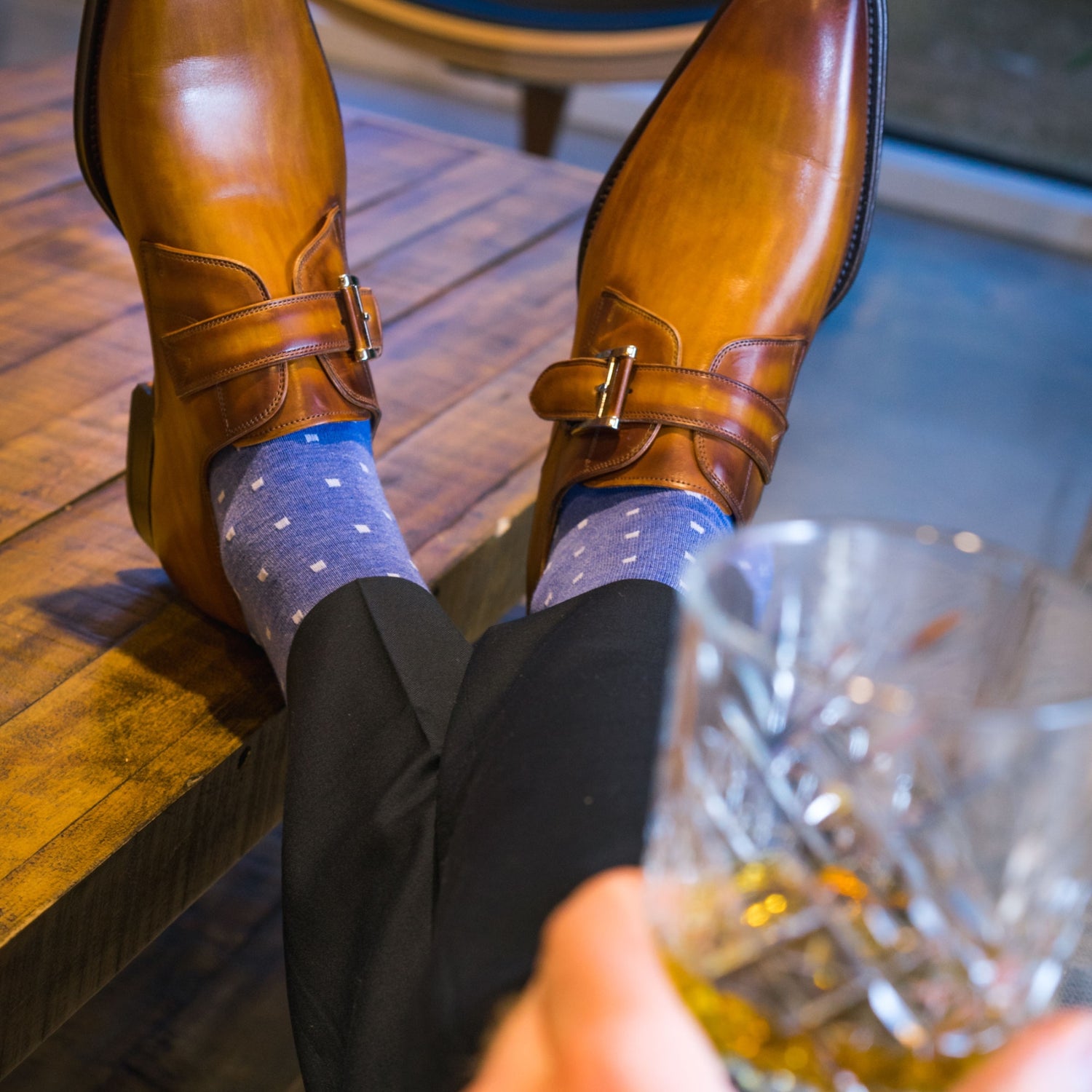We talk a lot about style here. Today, let's focus on something that's just as important: the materials that make up a good dress sock. The makeup of the sock is as crucial as the style it offers. Without the right fit, durability, and comfort, any style bonus is lost - and vice versa.
Therefore, it's vital to choose the right material for your dress sock. You'll have several different choices, all of them with their own benefits and drawbacks. Today, let's go over these dress sock materials and go in-depth on their pros and cons - and present to you an alternative that should fit all your needs.

Cotton Socks
However, there are some significant downsides to cotton socks. As new research shows, cotton socks are a poor option for exercise. Cotton fibers hold in sweat - and with effort and exertion that comes with exercise, that combination can easily cause blisters to pop up on cotton sock-clad feet. The poor moisture-repelling qualities of cotton also make it a poor choice for hotter environments and can lead to irritation and skin fungus problems. Additionally, cotton socks lose their initial shape very easily as they stretch-out from wearing and shrink from washing.
Bamboo cotton socks are another option in the marketplace these days. This style seems to be the new hot thing in the market. You may not immediately think of bamboo when it comes to footwear - it's probably down the list after "the stuff pandas munch on" - but the versatile grass is transformed into many articles of clothing, including socks. Bamboo socks do possess good moisture and bacterial protection qualities (as the grass naturally repels those substances).
They do a good job of keeping feet comfortable and dry along with getting rid of the odor. The downside of bamboo cotton socks? As with other cotton blends, it's subpar when it comes to shape retention, durability, and bamboo socks often suffer from shrinkage in the wash.
Wool Socks

Wool is also not very durable when used for clothing that requires stretch and movement - like socks. For clothing material that isn't meant to give or move much (like suits, for example) wool is a superb choice; however, it just doesn't provide the stretch and comfort needed for socks. Wool can also make your feet very hot, causing uncomfortable sweat, and can be itchy and uncomfortable when worn on bare skin (there's a reason many opt for an undershirt while wearing a wool sweater, for example).
Finally, the material is also notoriously difficult to launder; without careful care, wool socks can easily be ruined.
Polyester Socks
We developed polyester to be a superior version of cotton. Polyester offers several advantages. It creates durable socks that fit the foot and stay in place, even after significant use. Polyester doesn't shrink in the wash and doesn't stay stretched out after it has been worn. The socks are also quick to dry and relatively moisture-repellent. They're significantly more durable than cotton, lasting far longer than their counterparts. Also, polyester socks hold color much better than cotton socks; colors and patterns stay vibrant and look new for far longer.
In addition, lower quality polyester yarns can lack comfort and durability. It's only the higher quality threads that bring the best of both worlds.
So, with all of those upsides - and downsides - what is the ideal choice for a dress sock? The answer is none of the above. In actuality, the best choice for a dress sock is one that has a mixture of different materials, a mixture that emphasizes the benefits to each one while eliminating or counteracting the downsides.
That's what we did at Southern Scholar with our own, unique material blend for these men's socks. Here's how it breaks down:
- The base material of these cool dress socks is 32s/1 polyester - the highest-quality spun polyester material. It's soft, durable, and consistent. It won't stretch out to uncomfortable lengths after wearing or shrink after washing. The blend wicks away moisture to keep the feet dry and comfortable.
-
Viscose / Rayon is blended into a portion of the polyester threads to deliver a smooth, silk-like finish. It also holds the colors of the sock very well, so they'll remain stylish and vibrant without fading - even after plenty of wearings and washings. This type of comfortable, colorful construction is commonly found in yoga pants, which are constructed with performance, durability, and retention over time at the top-of-mind. - Finally, nylon and spandex
are mixed in throughout the entire sock to provide a universal stretch. These materials are included in the pattern, toe, heel, and cuff to deliver plenty of stretch and comfort throughout. Just as important: this construction allows the sock to stay in place just where it should be throughout the entire day.

All of that and the trademark Southern Scholar style, too. Interested in the best dress socks out there? Try this sock subscription service. Every month, this sock of the month club delivers these high-quality, ultra-comfortable socks right to your door. Named as one of the 27 best subscription boxes for men, Southern Scholar is ideal for anyone who wants to add a dash of fashion and style to their footwear. It's at the top of the list for any of the men's subscription boxes out there.


